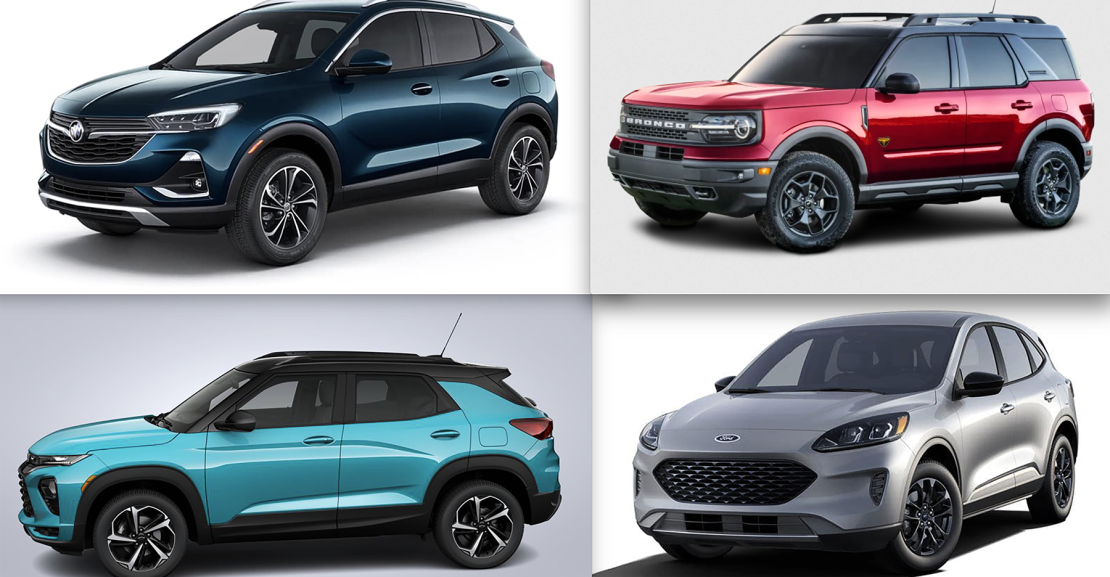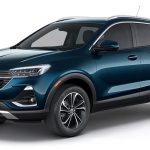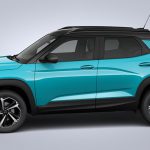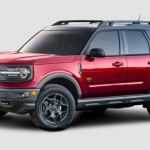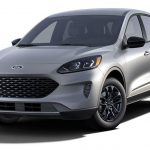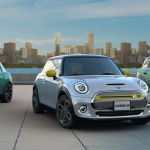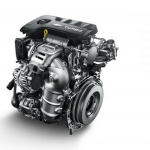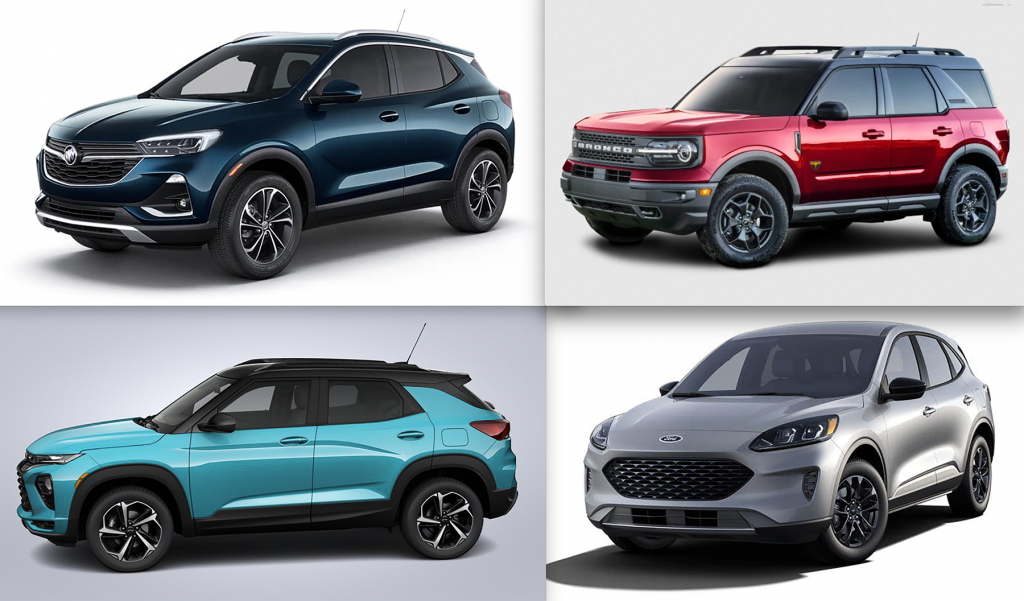
You already know the answer. Why would an automaker offer a car or truck with a 3-cylinder engine? Money. There are other reasons, but money is the primary motivator.
An engine with three pistons instead of 4 costs less to build. One less piston, less material in the cylinder block and head, shorter crankshaft, one less fuel injector—well, you get the point.
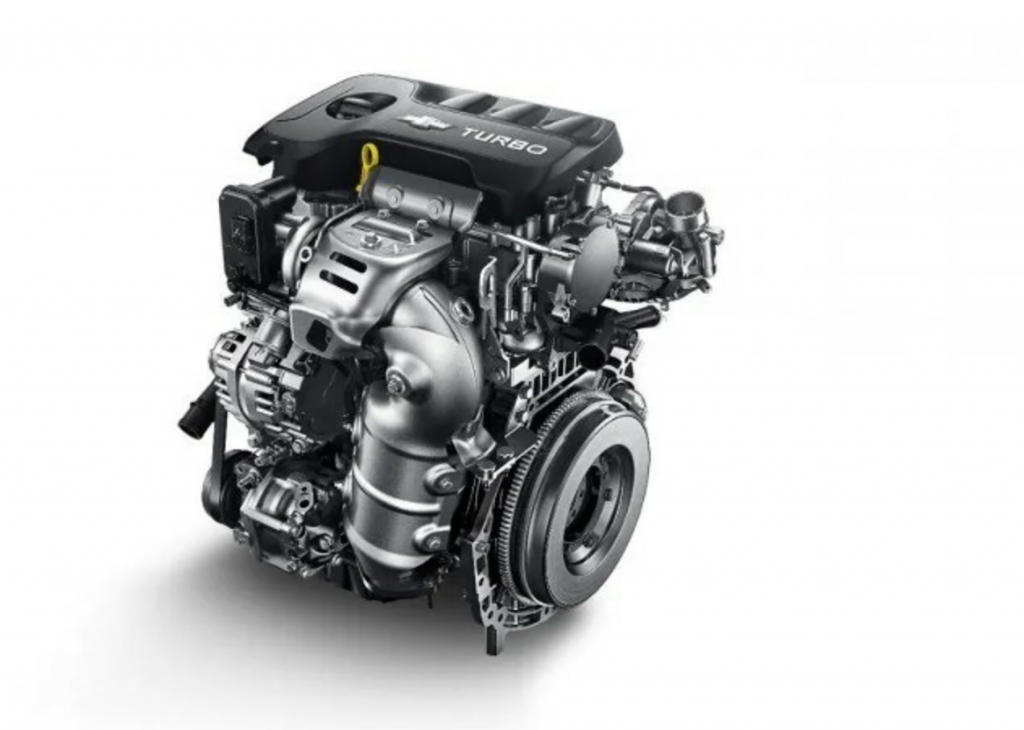
Fuel economy plays a role, too. Not only does a 3-cylinder engine weigh less than a 4-cylinder—which helps with fuel economy—there’s also less internal engine mass to keep turning, reducing frictional losses.
With the exception of the Mitsubishi Mirage (see below), Consumer Guide has not found 3-cylinder engines to be wanting for power. Thanks to turbocharging and direct injection, even small-displacement 3-cylinder engines can deliver the kind of power American consumers expect from contemporary new vehicles.
Refinement and power delivery can be problematic, however. In general terms, the 3-cylinder engines recently evaluated by Consumer Guide tended to idle somewhat roughly and—in some cases—provided less-than-linear power when accelerating from a stop.
Whether or not consumers will take note of these issues—or care—remains to be seen. In China, 3-cylinder engines are relatively common, though in vehicles that generally cost less than those shown below.
Presented here is a gallery of all the 3-cylinder vehicles currently available for sale in the United States. Any surprises? If you’ve spent time with a 3-cylinder car or crossover, tell us about it. The place to leave comments is down below.
3-Cylinder Vehicles
2021 Buick Encore GX
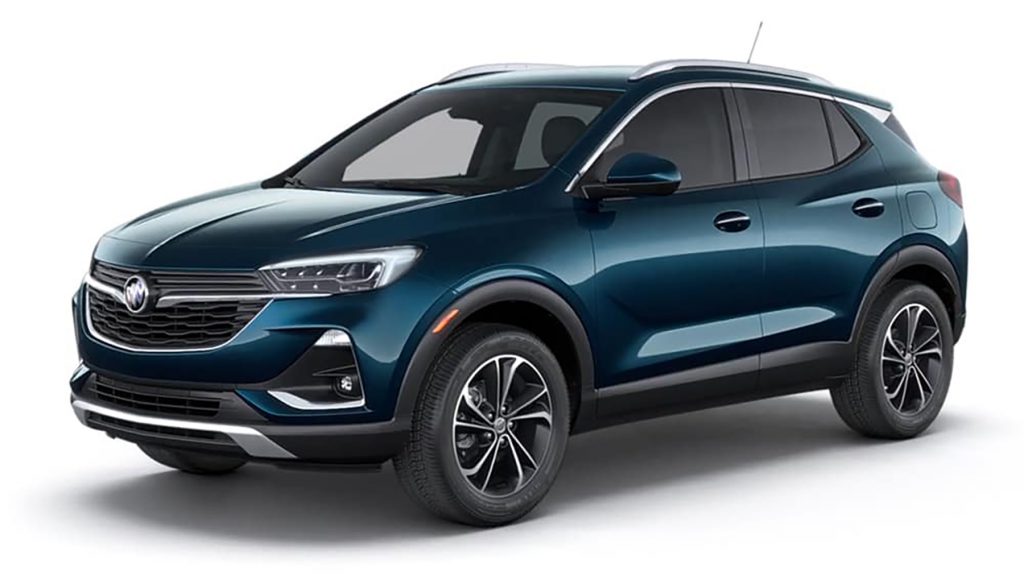
Engines
1.2L Turbo
Horsepower: 137
Transmission: Continuously-variable (CVT)
EPA combined MPG: 29 (front-wheel drive)
1.3L Turbo
Horsepower: 155
Transmission: CVT (front-wheel drive), 9-speed automatic (AWD)
EPA combined MPG: 31 (front-wheel drive), 28 (AWD)
Though slightly larger and heavier than Buick’s entry-level Encore, it is the Encore GX that is powered by 3-cylinder engines. A test front-drive Encore GX powered by the larger 1.3-liter engine returned 33 mpg in our testing. We found the engine decently powerful, but throbby at idle, and less refined overall than the 4-cylinder powerplants in competitive products.
Test Drive: 2020 Buick Encore GX Essence
2021 Chevrolet Trailblazer
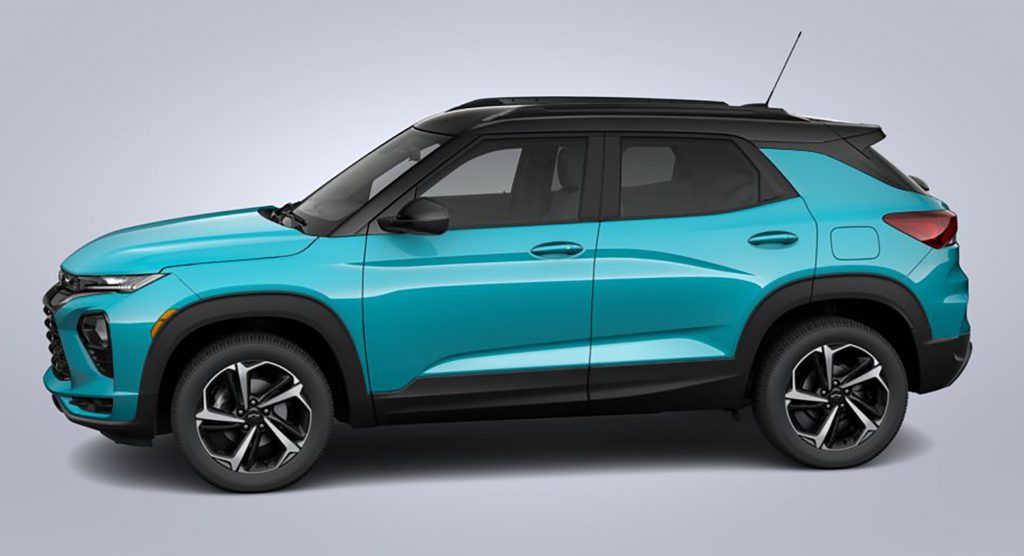
Engines
1.2L Turbo
Horsepower: 137
Transmission: Continuously-variable (CVT)
EPA combined MPG: 29 (front-wheel drive)
1.3L Turbo
Horsepower: 155
Transmission: CVT (front-wheel drive), 9-speed automatic (AWD)
EPA combined MPG: 31 (front-wheel drive), 28 (AWD)
As the Trailblazer is similar mechanically to the Buick Encore GX, its specs are nearly identical. A test AWD example returned about 33 mpg in Consumer Guide testing.
Test Drive: 2021 Chevrolet Trailblazer LT
Ford Bronco Sport
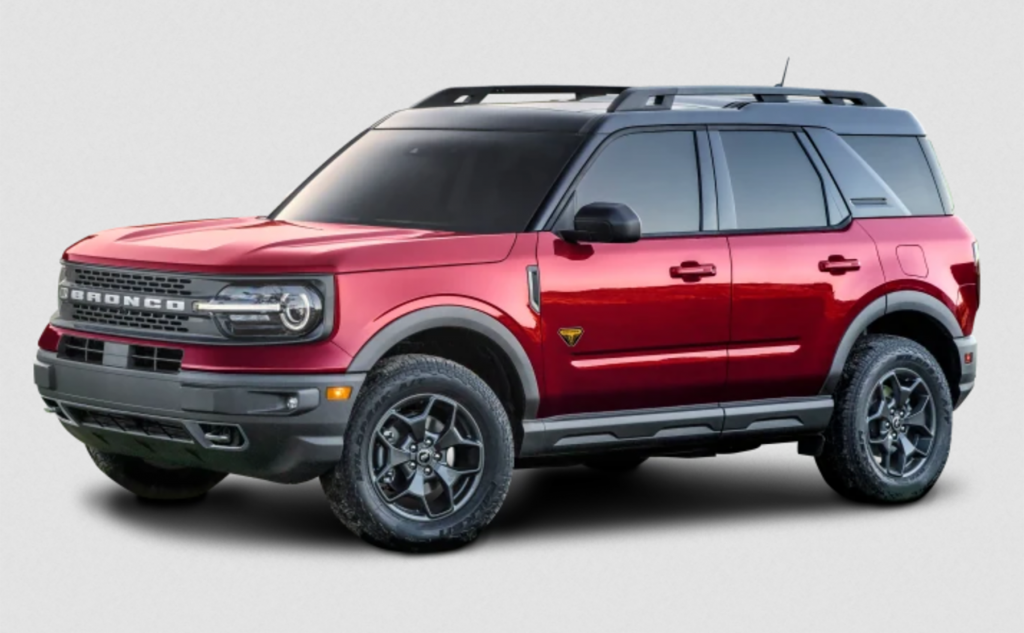
1.5L Turbo
Horsepower: 181
Transmission: 8-speed automatic
EPA combined MPG: 26 (AWD)
While the Bronco Sport’s base engine is a 3-cylinder unit, a potent 250-horsepower turbocharged 2.0-liter four is also offered. In early testing, Consumer Guide saw fuel economy close to the EPA combined estimate with the base 1.5 turbo. We found the 3-cylinder engine to provide decent acceleration, but low-speed power delivery could be erratic. Idle smoothness was also subpar.
Modular Misfit: The Forgotten Ford V10
2021 Ford EcoSport
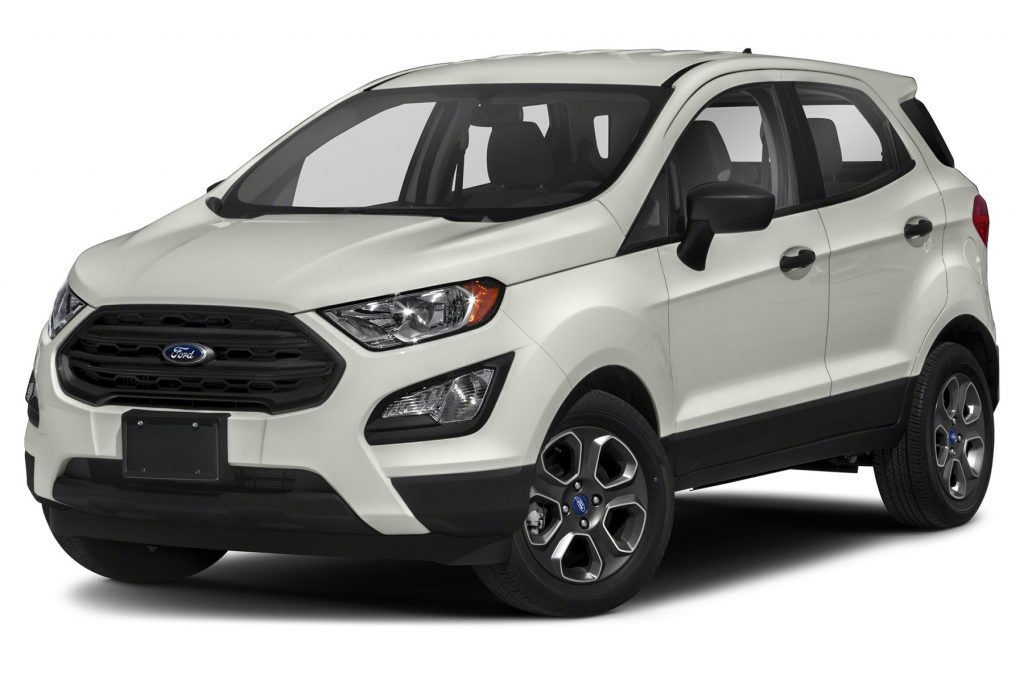
1.0L Turbo
Horsepower: 123
Transmission: 6-speed automatic
EPA combined MPG: 28 (front-wheel drive)
This tiny “EcoBoost” engine was offered in the U.S. in versions of the Ford Fiesta and Focus before those vehicles were discontinued in this market. All-wheel-drive versions of the EcoSport come with a 2.0-liter naturally aspirated (not turbocharged) 4-cylinder engine which provides a meaningful bump to 166 horsepower.
Test Drive: 2018 Ford EcoSport SES
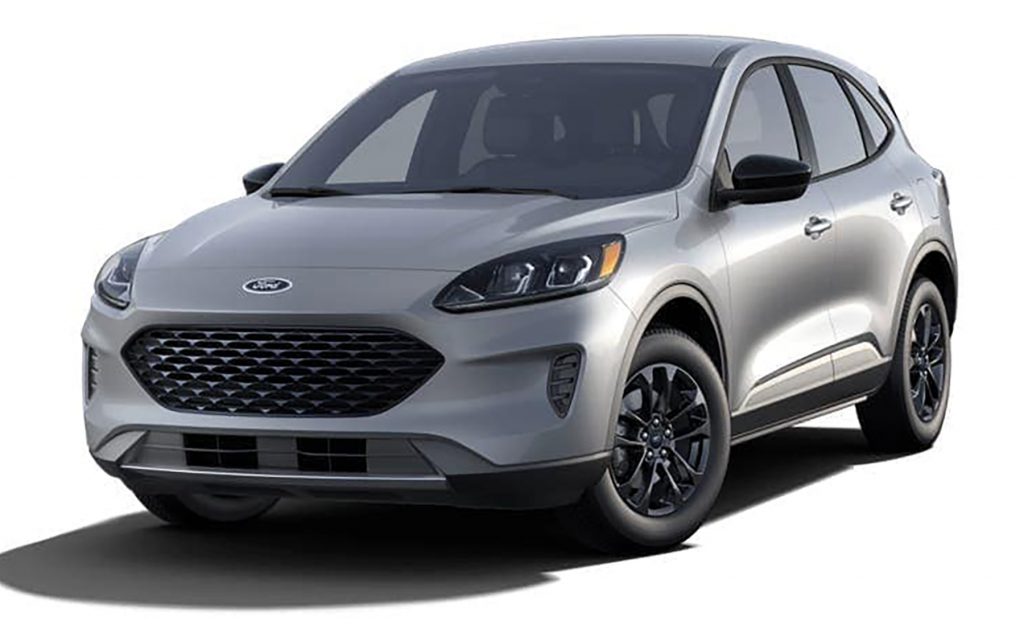
1.5L Turbo
Horsepower: 181
Transmission: 8-speed automatic
EPA combined MPG: 30 (front-wheel drive), 28 (AWD)
Like the mechanically related Bronco Sport, the Escape’s base engine is a 3-cylinder unit, and a 250-horsepower turbocharged 2.0-liter four is also on offer. An Escape hybrid variant is available as well—it employs a naturally aspirated 2.5-liter four paired with an electric motor for a total output of 198 hp.
2021 Mini Cooper

1.5L Turbo
Horsepower: 134
Transmission: 6-speed manual or 7-speed automatic
EPA combined MPG: 27-31
With the exception of the Clubman hatchback, every 2021 Mini base model comes standard with a 3-cylinder engine. Sporty S variants get a 189-horsepower 2.0-liter four (which is standard on the Clubman) while the performance-oriented John Cooper Works models step up to a 228-hp 2.0 four. Also available is a pure-electric Cooper Hardtop and a plug-in-hybrid Countryman, the latter of which also employs a 3-cylinder engine. Bad news? The Mini three banger needs to be fed pricey premium gasoline.
America’s Last Manual Transmission Vehicles
Mitsubishi Mirage and Mirage G4
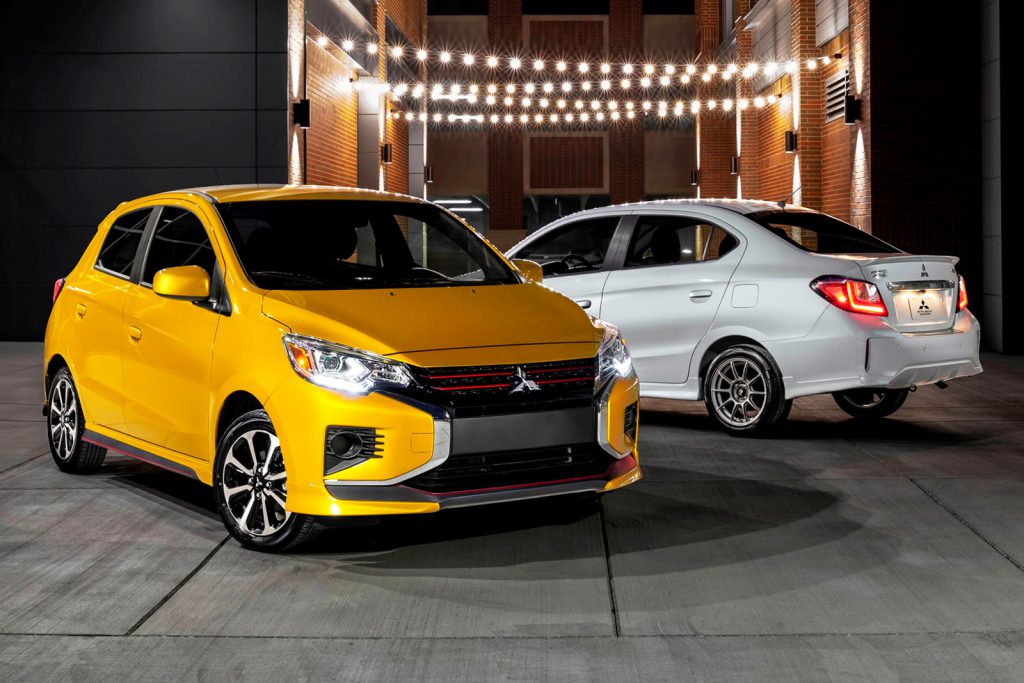
1.2L
Horsepower: 78
Transmission: 5-speed manual or CVT
EPA combined MPG: 35-36 (5-speed), 37-39 (CVT)
As the only normally aspirated engine on this list, it should come as no surprise that the Mirage’s tiny engine is also the weakest. In routine driving, the Mirage isn’t painfully slow, but the 3-cylinder isn’t very refined, nor is it actually all that easy on the gas. Consumer Guide last tested a Mirage in 2017. Equipped with the CVT automatic, that car returned only 30 mpg during our evaluation. No other engine is offered in the Mirage.
I Broke the 50-MPG Barrier Driving Through Wisconsin. It Was Hell.
2021 Nissan Rogue
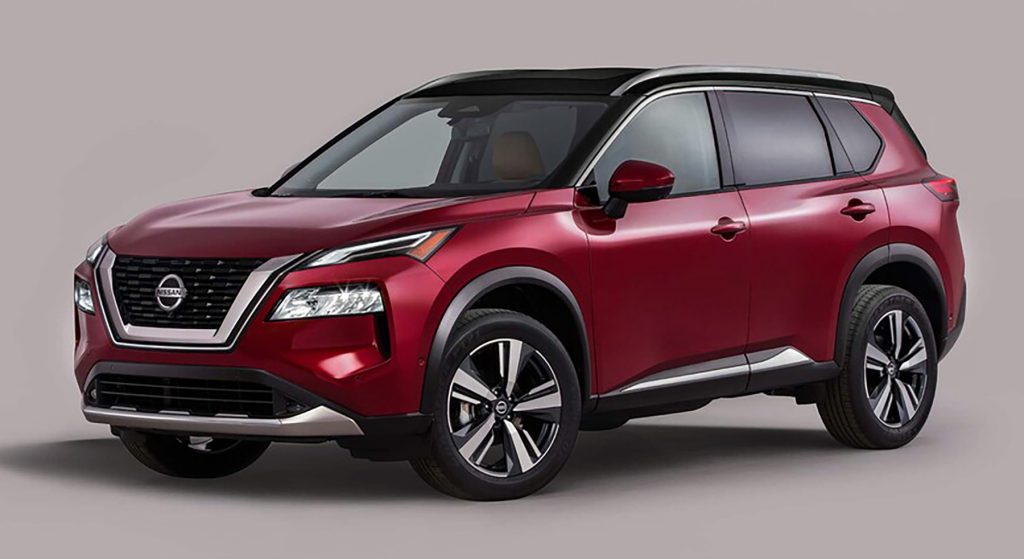
1.5L Turbo
Horsepower: NA
Transmission: CVT
EPA combined MPG: 32-33
The EPA has rated this new addition to the Nissan Rogue compact-SUV lineup, but specs have not yet been published. Reports suggest the engine will be available in 2021 models, though a 2022 debut would make more sense. Expect the new engine to produce 130-140 horsepower. The 2021 Rogue is currently powered by a 181-horsepower 2.5-liter four.
Listen to the Consumer Guide Car Stuff Podcast
3-Cylinder Vehicles Gallery
(Click below for enlarged images)
3-Cylinder Vehicles
3-Cylinder Vehicles

